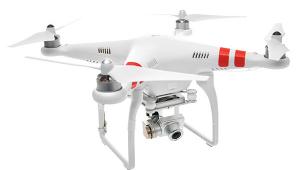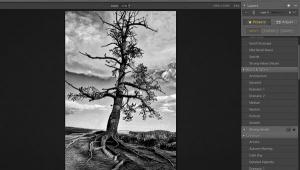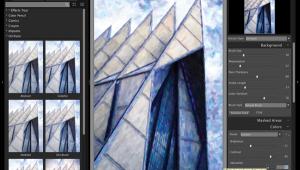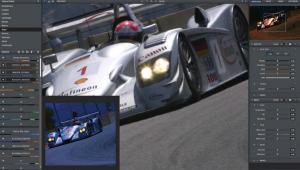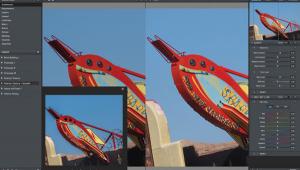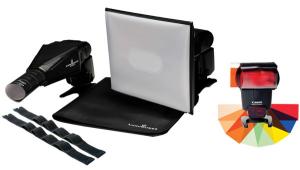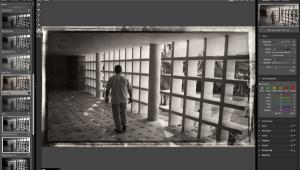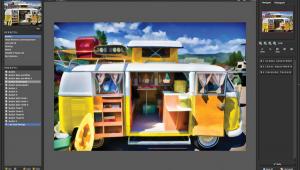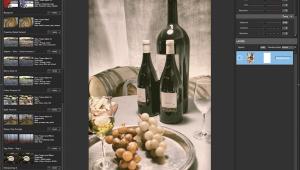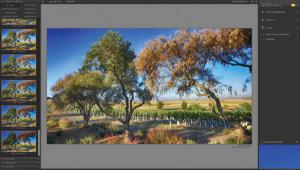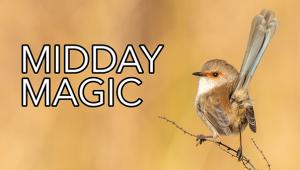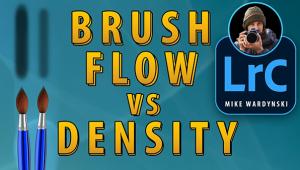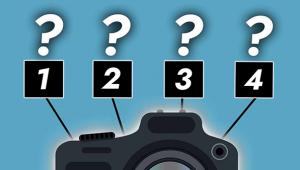Digital Innovations: Entering The Millennium
Happy New Year! I'll leave to others to debate whether or not the next millennium actually begins at midnight December 31, 1999 or on December 31, 2000. For digital imagers, the new millennium is already here. It wasn't all that long ago that a 100MHz microprocessor was considered fast, but now companies are introducing computers with multiple 450MHz Pentium II chips that easily turn what were formerly hour-long projects into a few minutes work. Digital imagers, like race car drivers can never have too much power, so many of us will harness this horsepower to create new, exciting images without having to sit and stare at the screen while waiting for an action to complete or a filter to be applied. Instead, image manipulations can happen within literally a blink of the eye. Digital photographers can reallocate this extra time to work on other images or use it to refine and improve the project they are currently working on. My guess is that most of us will split the difference, producing more arresting images in less time. We're entering a millennium where the image itself--not the technology that created it--will be the focus of attention. For digital imagers, the old Chinese curse, "May you live in interesting times" has turned, instead, into a blessing. |
|||
Where No Lens Has Gone
Before. Combining elements of computers and traditional photography,
a company with the intriguing name Be Here has created a system for producing
sweeping panoramic images. Their Portal S1 Imaging System includes the
S1 lens and computer software that decodes and reformats the raw image
data into standard graphics file formats, including JPEG, PICT, and BMP.
The S1 lens can be attached to any digital or film Nikon-mount camera
and will capture an image with 360° horizontal and 100° vertical
views with a single click of the shutter. Panoramic images can be viewed
with software such as QuickTime VR, Live Picture's Reality Studio,
and Be Here's Java PanViewer. For more information contact Be Here
at (408) 873-1300 or visit their web site at www.BeHere.com. |
|||
For affordable digitizing,
Agfa produces the SnapScan line of scanners. The new SnapScan 1212u is
a Universal Serial Bus (USB) scanner that can be used with any Windows
98 system with this capability as well as Apple Computer's new iMac.
The SnapScan 1212u has a color depth of 36-bits and an optical resolution
of 600dpi that can be interpolated up to 9600dpi. It has a retail price
of $129. The 1212p is a 36-bit parallel port scanner with specifications
similar to the 1212u and carries a price tag of $99. Other new SnapScan
models include the 1236S and 1236 Artline. Both have identical hardware
specifications with the difference being the software bundle that's
included. The Artline scanner bundles graphics-oriented, image enhancement
software package and is a gray instead of the white that's used
for the other scanner. The new SnapScan 1236S scanners feature 36-bit
color depth and a 600dpi optical resolution that can be expanded to 9600dpi
through interpolation. Prices are $249 for the standard SnapScan 1236S
and $299 for the Artline. For more information about Agfa scanners, call
(888) 281-2302 or visit their web site at www.agfahome.com. |
|||
Imacon, Inc. recently announced
the FlexTight Precision II scanner, a new generation of the company's
award-winning CCD-drum scanner. The FlexTight Precision II is the first
scanner ever to incorporate an adaptive light source into its scanning
design--it can scan dark originals with detailed shadow areas. It delivers
a resolution up to 5600dpi and a density range from 0-4.1D. In addition,
because of its compact vertical design, the FlexTight Precision II's
footprint is only 9.7x13.8", which takes up considerably less desk
space than a flat-bed scanner. The scanner has a list price of $16,995
and is available through Imacon's distribution channel worldwide.
For more information, call Imacon, Inc. at (888) 462-2668 or visit their
web site at www.imacon-usa.com. |
|||
Kodak's new DCS 560 pro-level
digital field camera is built around a Canon EOS body that allows the
creation of six megapixel images at a rate of one image per sec. The CCD
chip provides a flexible ISO equivalent of 80-200 for 18MB image files
that have a color depth of 36-bits. Image resolution is an impressive
3040x2008 pixels. The DCS 560 has a LCD display to provide instant review
of your digital photographs. The suggested list price is $28,500. For
more information call (800) 235-6325 or visit Kodak's web site at
www.kodak.com. |
|||
Polaroid's new PDC 640
digital camera has an affordable list price of $299. The handsome looking
point-and-shoot camera offers 640x480 resolution images and 2MB removable
SmartMedia cards that can store up to 64 images, depending on the resolution
of the digital photographs. The camera has a built-in flash along an optical
viewfinder as well as a 1.8" LCDD preview screen for more precise
composition. The camera is bundled with PhotoMax Image Maker software,
batteries, PC and TV cables, an AC adapter, and a wrist strap. For more
information, call (800) 343-5000 or visit Polaroid's web site at
www.polaroid.com. |
|||
For the past several months
I've been using a device that's a scanner, copier, fax, printer,
and answering machine wrapped up into a single peripheral. The industry
buzzword is MFP for "multifunction peripheral." Brother International
introduced its first laser-based MFP called the MFC-P2000, which features
600dpi laser printing with an output speed of 10 pages per minute. The
MFC-P2000's copier function produces black and white copies with
enlargement modes of 150 percent and 200 percent and reduction modes of
78 percent and 50 percent. The scanner function has an interpolated resolution
of 600dpi and is TWAIN compliant. While a fax function isn't included,
you'll find it in Brother's new MFC-7150C and MFC-7160C. Both
can print 720dpi color output at up to four pages per minute, offer color
copying capability, and have a 300dpi 24-bit scanner built-in. The fax
function has a 20 page document feeder and a 14.4K fax modem. You can
also plug a digital camera directly into an input port and print color
output of still frames from a camcorder or VCR. The main difference between
the two models is that the 7160C includes an answering machine function
which has a 99 minute capacity and a full duplex speaker phone. The MFC-7150C
has a street price of $499 and the MFC-7160C is $599. Additional information
can be obtained at the Brother fax back line at (800) 521-2846 or by visiting
their web site at www.brother.com. |
|||
Plug-In Of The Month.
This month's outstanding Photoshop compatible plug-in is Vivid Detail's
Test Strip 2.0. If you've had trouble matching what you see on the
monitor to what comes off your printer, you need Test Strip. It's
the first color management software I've found that functions the
way that photographers are used to working--by producing a test strip
showing varying degrees of density and color. You can do this on screen,
but printing a Test Proof lets you make the comparisons of how the printer
has interpreted your on-screen image. Test Strip lets you work with color
or density changes in one percent increments--on RGB or CMYK images--and
has "before" and "after" screens that let you
compare any changes to the original. Vivid details also includes 73 photographic
and 115 special effects filters. For more information contact Vivid Details
at (805) 646-0217 or visit their web site at www.vividdetails.com. |
|||
Photo E-Mail.
Polaroid's new DirectPhoto 2.0 lets you capture, edit, merge, and
e-mail digital pictures from scanners, digital cameras, or other sources.
After installing the software, a DirectPhoto icon appears on your Microsoft
Word or Power-Point toolbar. When you click the Polaroid button, DirectPhoto
allows you to select an image and place it in any of your documents. When
preparing an e-mail attachment, DirectPhoto offers image compression and
a self-extracting viewer allowing the person who receives your photographs
to double-click the attachment and view the image on screen. DirectPhoto
is TWAIN-compliant and can open and save files in the imaging formats,
such as BMP, JPG, and TIFF. To improve the quality of your digital photographs,
the software includes image-editing tools, such as brightness, contrast,
gamma, color balance, color saturation, resizing, sharpening, and cropping.
DirectPhoto costs $29.95 and is available for Windows 3.1, Windows 95,
or higher. For more information call (800) 343-5000 or visit Polaroid's
web site at www.polaroid.com.
For availability in Canada, contact (800) 268-6970. |
- Log in or register to post comments









